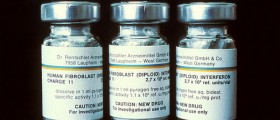General about HIV
This article will inform us about the possible HIV symptoms that occur in men who have been infected more than 6 months. According to the gathered data by the World Health Organization, 2.7 million people get infected by this virus, and two million people die from the HIV.
It is very difficult to diagnose HIV, because symptoms may vary depending on the person who has been infected. We all know that people develop HIV due to Auto Immune Deficiency Syndrome and that it is transferred most frequently by sexual intercourse. Nowadays, HIV late symptoms appear in Third World Countries, and the death toll there is measured with the plague death toll. But, there are also a lot of HIV patients in the US.

Firstly in most cases, HIV lies in the body, resting and waiting for the right moment to reveal itself. In some cases, years may pass until a person experiences the first symptoms of AIDS, and it is because of the unpredictability of AIDS appearance that it is very hard to give some accurate prognosis for HIV symptoms appearance.
So, if any symptoms in men don’t appear before six months from receiving the virus, those symptoms are considered asymptotic. But, during the first six months, some HIV/AIDS symptoms that can be overlooked may appear and those symptoms include extreme physical exhaustion, bruising, body rashes, and symptoms that resemble an ordinary flu.
HIV Symptoms in Men after 6 Months: Facts to Know
To comprehend the progression of HIV symptoms, we need to know all the symptoms from the beginning. During the first month, the symptoms are more acute, and this phase lasts around 30 days, but after that, the symptoms may start appearing more often.
- As part of an ongoing prospective longitudinal study, this study describes symptoms experienced by 317 men and women living with HIV/AIDS. Participants were recruited at HIV clinics and community sites in the San Francisco Bay area.
- Measures included their most recent CD4 cell count and viral load from the medical record, demographic and treatment variables, and the 32-item Memorial Symptom Assessment Scale to estimate prevalence, severity, and distress of each symptom as well as global symptom burden.
- The median number of symptoms was nine, and symptoms experienced by over half the sample included lack of energy (65%), feeling drowsy (57%), difficulty sleeping (56%), and pain (55%).
- Global symptom burden was unrelated to age or CD4 cell count. Those with an AIDS diagnosis had significantly higher symptom burden scores, as did those currently receiving anti-retroviral (ART) therapy.
- African Americans reported fewer symptoms than Caucasians or Mixed/Other race and women reported more symptom burden after controlling for AIDS diagnosis and race.
After the sixth month of the infection, HIV symptoms no longer exist in infected men, but during the earlier phase our immunity system has already started its fight against AIDS and the production of the antibodies is continuing. Seroconversion symptoms are the symptoms that are experienced after the body has started to produce antigens to fight the HIV virus.
Early HIV diagnosis is important because a patient's life can be improved a lot, and it is important to emphasize that people can carry the HIV virus without even knowing it for years, and they can transfer it to others. HIV/AIDS can be held under control if the early diagnosis is set.













_f_280x120.jpg)



Your thoughts on this
Loading...